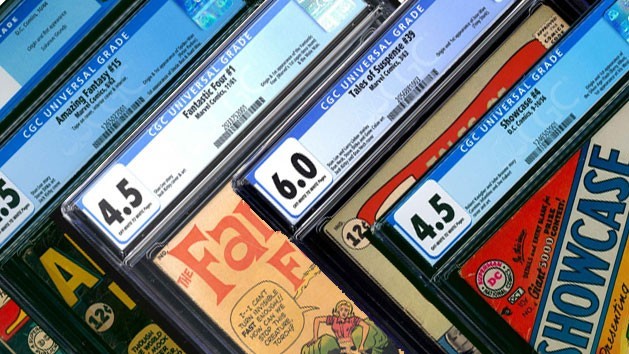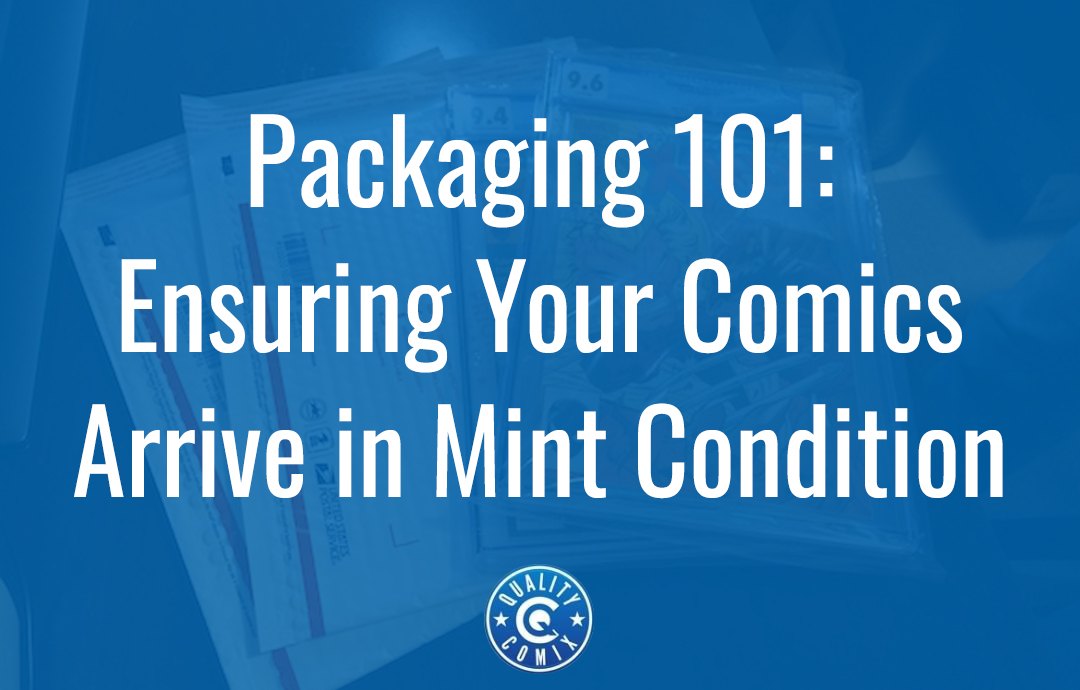
Whenever you're selling comics, someone is buying them, and that means the comics need to reach their buyer. Now, local sales are easy; you can just meet somewhere and hand them over. Selling to a store is just as easy, handing the comics to a clerk. For certain valuable comics, you might go out of your way to hand-deliver them or have a trusted courier service handle them.
For the majority of comics, though, they're going to go through one of the major postal carriers. UPS, FedEx, and The United States Postal Service all handle packages by the millions every day, and while the majority of them make it through the system without issues, there are always a few that don't.
Maybe a shipping crate of cooking oil breaks open and spills over a thousand packages. Maybe a heavy box with furniture or weights in it smashes through other, smaller packages on the way down a conveyor belt. Maybe there's a rash of package theft in the destination area. Whatever the case, there are all sorts of reasons why a comic might be in danger when shipping and it doesn't matter what carrier you use.
As a seller and a shipper, you need to do everything in your power to properly pack your comics for shipping to minimize the chances that they're damaged in transit. The question is, how?
Table of Contents
Step 1: Know the Value
The first thing you want to do is know the value of the comics you're selling and shipping. Sounds easy, right? Well, that's just the first step. The real trick is understanding what that means.
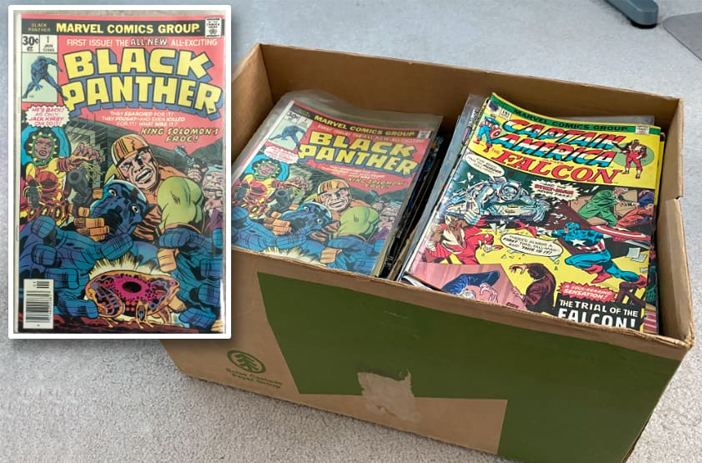
What it means is this:
- For lower-value comics, you don't need to go overboard with multiple layers of protection, resulting in a bulky box that is more expensive to ship.
- For higher-value comics, you need to have something more than some cardboard in a media mailer box.
You'd be shocked at the kinds of shipping "protection" people will use to ship their comics. We've seen it all, from crumpled-up newspapers around comics in zipper-lock baggies to stacks of $1 comics heavily secured like they were worth their weight in gold to surprisingly high-value comics shipped with virtually no protection.
Step 2: Secure the Comics Appropriately
Each comic should be individually secured as is appropriate to its value. That means, generally, a bag and board or a slab. Lower and mid-range comics should be bagged and boarded, and the bags should be secure enough that the comic won't slip around while the package is jostled in transit.
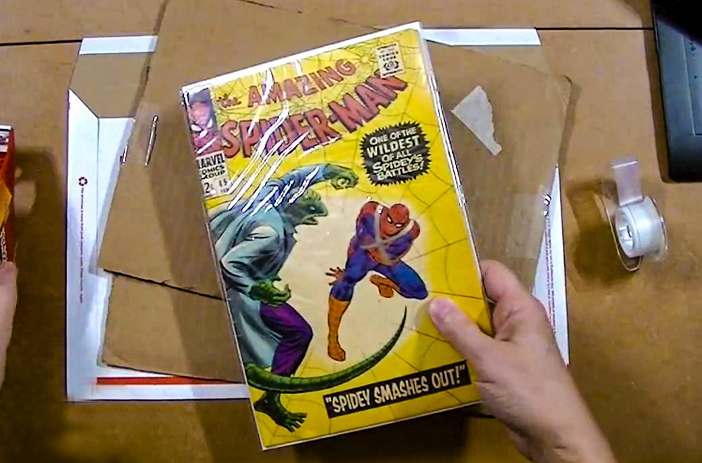
High-value comics, of course, are likely graded and slabbed already. They're as secure as they can be, and it's just a matter of protecting them for shipping.
Comics somewhere in the middle – especially comics that are valuable enough to be worth grading but aren't graded – should be well-secured. You can bag-and-board them, or you can buy DIY slabs for a more secure package but without the tamper-evident seal and graded label.
Step 3: The Outer Package
Next up, you need the right kind of box to ship your comics.
- Do not use a cereal box, slit open and turned inside out with the edges taped up.
- Do not use a media mail box with the sides crimped over and taped.
- Do not use a random Amazon cardboard box of the complete wrong dimensions.
- Do not slap a label on a bagged comic and call it good enough.
There are more shipping sins than there are stars in the sky. Don't be one of them.
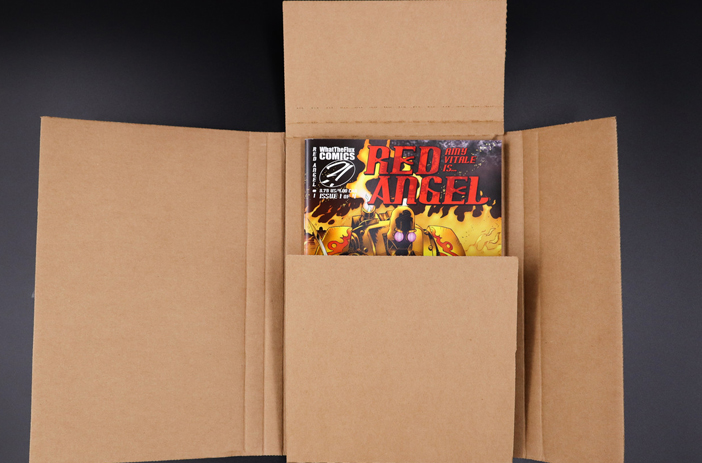
Generally, you have three options.
- A media mail box. These are boxes sold by USPS. They come in various sizes, so pick a size large enough to hold the comics you're shipping with some extra space around them.
- A standard cardboard box of the right dimensions to hold the comics with some space around them. The size of the box depends on the number of comics you're mailing.
- A purpose-designed comic shipping box like these. These are designed to fold snugly around and hold a comic in place. Most of the time, you want to put these inside one of the other two options and not ship it raw.
There are a lot of options here, and in part, it comes down to the number of comics you're shipping, how thick they are once they've been bagged or slabbed, and how much additional packaging material you have.
Step 4: Gather Protective Material
Comics need packing materials to help keep them safe in transit. Your packing material serves three purposes. First, it's meant to be water-resistant to avoid stray contamination or rain. Second, it should provide some stiffness and support for comics that aren't slabbed. Third, it provides a buffer against impacts, jostling, and other handling.
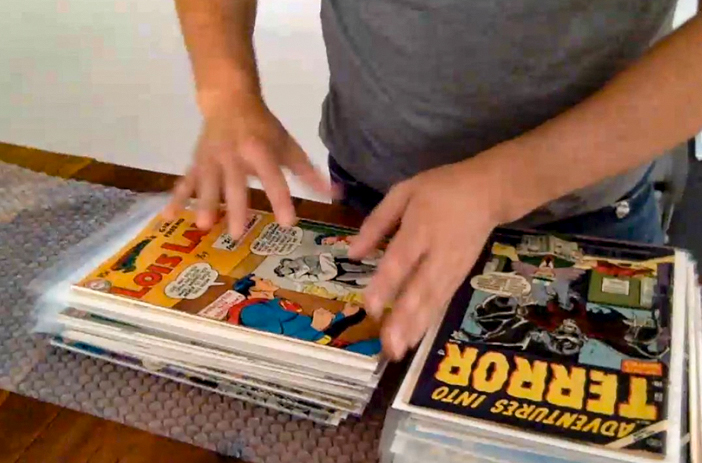
What options do you have?
- Bubble wrap. If you pay attention to what companies like CGC, who handle millions of comics a year, are doing, here's a hint: everything is swaddled in bubble wrap to protect it from every possible angle. If you do it right, you won't need anything except bubble wrap, but sometimes, other packaging materials can help as well.
- Foam boards. A foam board can be cut to size and taped around a comic, giving some stiffness and some impact resistance to the comic. This is best for inserting around comics in a box or for taping around individual comics in bags and boards.
- Packing peanuts. Normally, we wouldn't use these, but they're good to fill a larger box when you're shipping numerous slabbed comics. Make sure there are packing peanuts on all six sides of the comic, between it and the outer wall of the box.
Don't try to make plastic cases, don't use expanding foam, don't do anything weird. You really don't need much; you just need to do it right.
Step 5: Pack Properly
Now it's time to assemble.
At the core, you have your comic. The comic is surrounded by something to protect it and keep it flat. This is either a backing board and bag or a slab. Slabs are sealed; bags and boards should be closed up, and taping them can be a good idea, as long as you only use a little tape and make sure it's easy to remove. Folding over half an inch on the edge of the tape can help make it easy to peel, and blue painter's tape can be a good option as a tape that doesn't leave residue behind.
Comics with bags and boards should be given a second layer of protection to keep them stiff. This can be thick cardboard, sized to be slightly larger than the comics, and taped around the sides to keep the comic secure. Or, it can be foam boards prepared the same way and serving the same purpose. Don't use something thin like a tagboard; use a thicker cardboard. Comics in slabs are already protected enough from bending.
All of this should be wrapped in bubble wrap. Don't go too overboard; you don't need to turn a single comic into a bundle the size of a PC; two layers are usually enough. Make sure the bubble wrap covers the comic completely, including the top and bottom. A lot of people wrap it around sideways but leave the top and bottom exposed, which can potentially lead to damage. Tape the bubble wrap closed so it doesn't unravel during shipping.
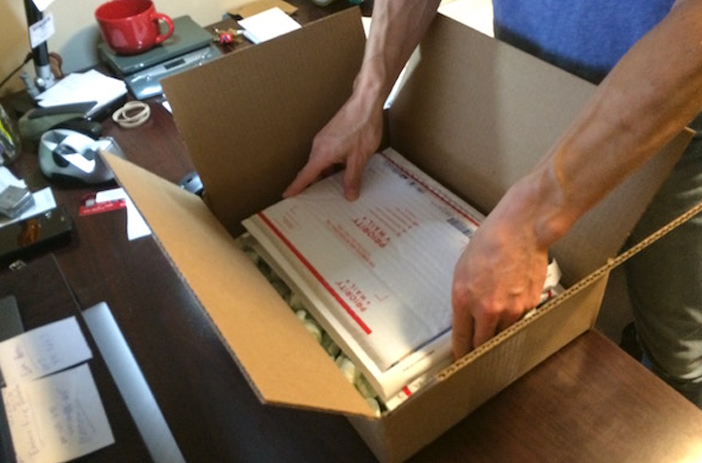
Ideally, this will fit snugly within your chosen box. Individual comics, wrapped and put in a box, are good to go if they're snug. If you're shipping multiple comics to the same buyer, they can be wrapped together with a bit of protection between them or wrapped individually if they're all uniquely valuable.
If your shipping box is too big, get a smaller one; don't try to modify the box and tape it together. If the box is too small, get a bigger one. Excess room in a package is the number one reason boxes fail in transit; if there's extra space, add more packing material to snug it up.
When you seal up the box, tape all of the seams. This is the only place you want to go slightly overboard; taping the seams helps prevent water from getting inside in the case of a stray spill.
Don't Rely on Instructions
You know how people often write "FRAGILE" or "DO NOT BEND" or "THIS SIDE UP" on packages they ship through the mail?
No one cares.
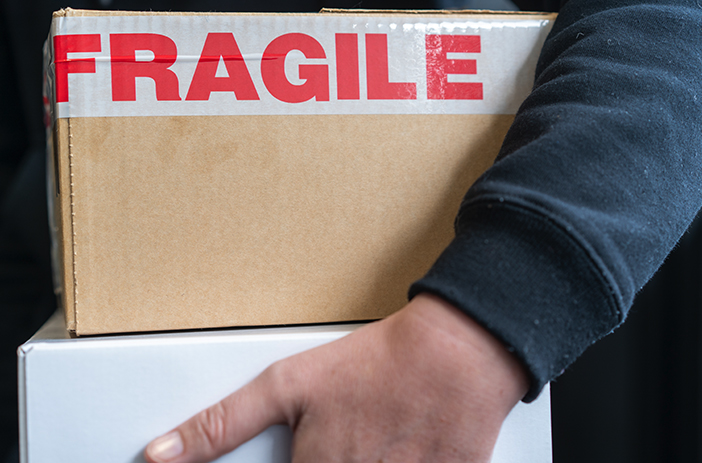
The sad truth is that our entire shipping infrastructure is so overburdened and understaffed that it's a wonder anything makes it through at all undamaged. No one is paying attention to labels, least of all the gravity on the conveyors moving packages around. They'll be tossed, flipped, spun, smushed between other boxes, and generally manhandled all the way through the process.
Don't rely on a directive; rely on your packaging.
Comics Damaged in Transit? Know Your Options
Now, let's say you did everything right, but somehow, the comic is damaged in transit, and the buyer isn't happy. What are your options?
First, assess the damage. If it's something superficial, like a crack in a slab, that can be solved. The buyer can send the slab to the company that graded the comic, and they can replace it. For example, CGC will "reholder," as it's called, comics worth less than $1,000 for $20 and comics of any higher value for $50. Offer to cover the reholdering fee for the buyer and arrange to have it reholdered, and the slab will be replaced, the comic will be returned, and all will be right with the world.
If the damage is to the comic itself, it becomes a trickier issue. It's up to you to work out a solution with the buyer.
- A lower-value comic might be easily replaceable, so you can just do that.
- A comic with minor damage can still be a fine collectible, and you can offer a partial refund for the damage.
- A comic with certain kinds of damage can be sent in for a pressing and cleaning to remove it, leaving the comic as good as new. Cover the fee, and it'll work out.
- A comic with more significant damage may need a full refund.
As a seller, you should be carrying a collectible insurance policy, and ideally, that policy will cover comics while they're being shipped. You can file a claim and get reimbursed for the value of the comic. So, refund the buyer, file your claim, and wash your hands of it all.
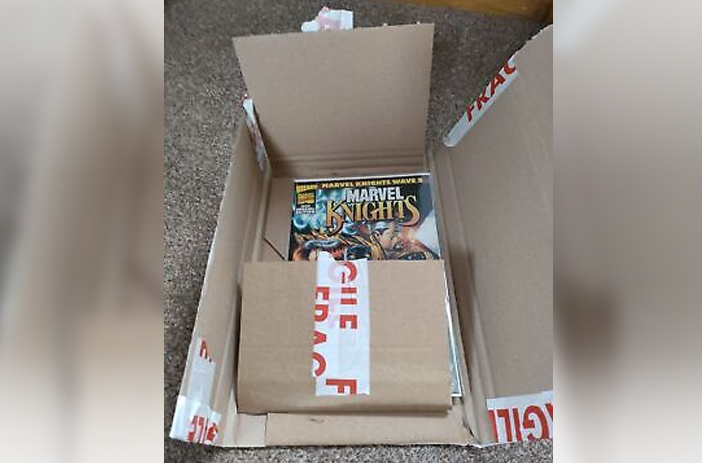
If the buyer wants insurance for their package as well, it's something they can arrange when they buy; if they bought insurance, you can file that claim. You likely won't be able to file both a claim against the postal carrier and a claim against your private insurance, though, so keep that in mind.
And, of course, make sure to behave cautiously. There are always occasional scammers out there who fake damage on a comic in an attempt to get to keep the "damaged" merchandise and get a refund. If anything seems fishy, follow your nose.
Hopefully, though, no scams and no damage will occur. By following the steps above and properly packaging your comics, you can dramatically minimize the chances of damage, and from there, you've done all you can.
If you want to sell your comics, why not sell them to us? We're always interested in dealing with valuable comics, and we're more than happy to help you appraise your collection and figure out what to do with it. And we can help before you even consider shipping. Just snap a few photos and head over here to request an appraisal and evaluation. It's free, with no pressure and no obligation.

If you've had horror stories from buying or selling comics and seeing the way they're treated in shipping (or the way they're packed before they arrive), leave them in the comments, too. Your experiences can be a cautionary tale of what not to do for anyone else reading this post.

